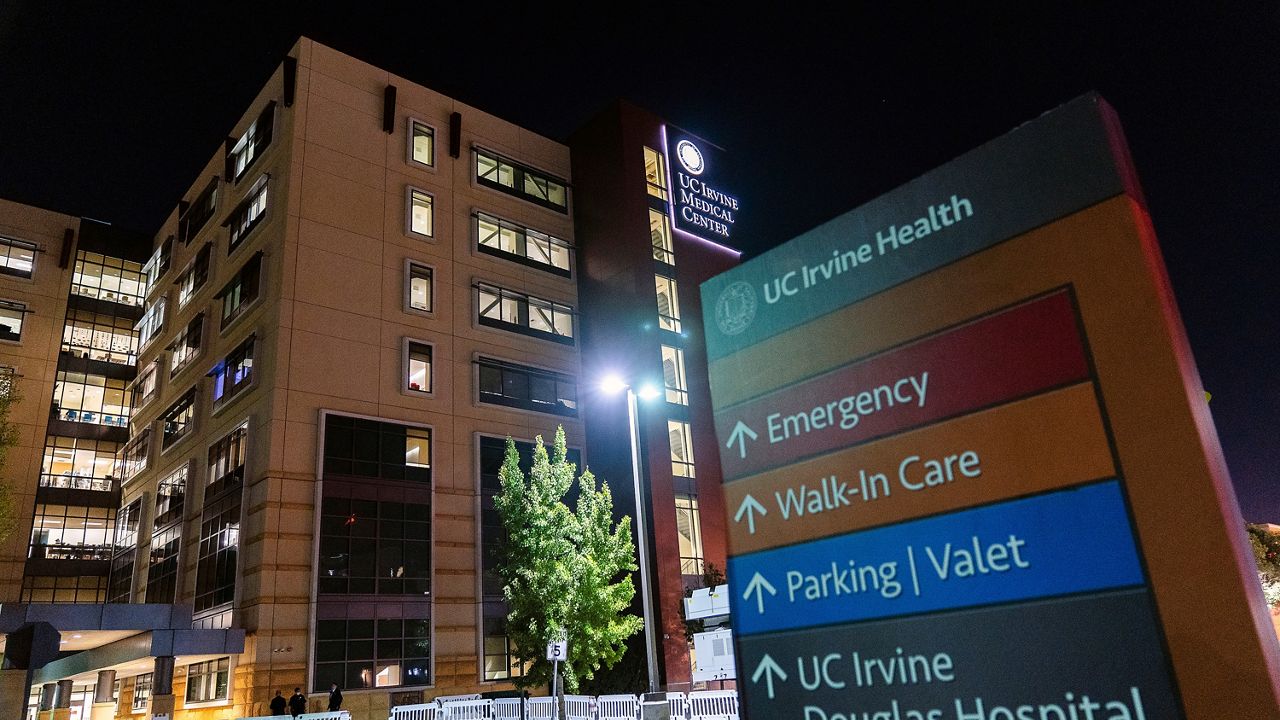SANTA ANA, Calif. (CNS) — Orange County's COVID-19 hospitalizations trended down, getting below 100 patients again, according to data released Friday by the Orange County Health Care Agency.
What You Need To Know
- OC's patient loads have been bucking up and down so far this month, reaching as high as 117 on May 8, but getting down to 83 as of Thursday
- The number of patients in intensive care units remained at 17, the same level it was at on Monday
- Andrew Noymer, an epidemiologist, "highly recommends" wearing a mask to stores and indoor events as well as outdoor events with large crowds
- Vaccines are still the best way to protect against severe illness and hospitalization, Noymer said
The county's patient loads have been bucking up and down so far this month, reaching as high as 117 on May 8, but getting down to 83 as of Thursday. The county had 57 patients hospitalized with a COVID-19 infection as of April 22.
The number of patients in intensive care units remained at 17, the same level it was at on Monday.
"I'm really pleased with that," Andrew Noymer, an epidemiologist and UC Irvine professor of population health and disease prevention, told City News Service on Friday. "I'm not resting on my laurels or anything, but that's good. More of the same, please."
Noymer noted, however, the inconsistency.
"We were as low as 60 quite recently, and then as high as 117, but now we're back down to 83, so it's encouraging, but I wouldn't say it's victory lap time yet," Noymer said.
The county has 29.9% of its ICU beds available, well above the 20% level when officials become concerned.
Of those hospitalized, 83.2% are unvaccinated, and that rate is at 86.4% in intensive care units.
The daily case rate per 100,000 people in Orange County increased from 10.8 Tuesday to 12.5 Friday on a seven-day average with seven-day lag, and from 7.5 to 8.5 for the adjusted rate with a seven-day average and seven-day lag.
The testing positivity rate went from 3.3% to 3.7% overall and from 1.4% to 1.7% in the health equity quartile, which measures the communities hardest hit by the pandemic.
Noymer said he "highly recommends" wearing a mask to stores and indoor events as well as outdoor events with large crowds.
The county logged 1,733 more infections, raising the cumulative case count to 559,071. Four new fatalities increased the death toll to 7,023.
One of the fatalities occurred May 7, making the first death this month so far. Two occurred in April, raising last month's death toll to 30. The other fatality occurred in February, raising that month's death toll to 330.
March's death toll stands at 86, January's death toll stands at 554, 115 in December, 121 in November, and 138 in October, 206 in September, and 201 in August.
The case rate per 100,000 for fully vaccinated residents who have received a vaccine booster dropped from 12 as of April 29 to 10.6 as of May 6, the latest data available show. The case rate for residents fully vaccinated with no booster decreased from 7.3 to 6, and the case rate for residents not fully vaccinated dropped from 11.9 to 10.8.
The number of vaccines administered in Orange County increased from 2,304,729 last week to 2,310,731, according to Tuesday's data.
That number includes an increase from 2,164,061 to 2,170,180 residents who have received the two-dose regimen of vaccines from Pfizer or Moderna.
The number of residents receiving the one-dose Johnson & Johnson vaccine decreased from 140,668 to 140,551 as officials continue to adjust to a new accounting of shots administered in the counties across the state.
Booster shots decreased from 1,280,690 to 1,273,356.
In the most recently eligible age group of 5 to 11 years old, the number of children vaccinated increased from 89,800 to 90,228, versus 178,352 who have not been vaccinated. It's the least-vaccinated age group in Orange County.
"The urgency is gone, the message from the government isn't 'vaccinate, vaccinate' anymore," Noymer said.
Vaccines are still the best way to protect against severe illness and hospitalization, Noymer added.
"If we're talking about protection from infection at all, they're clearly waning," Noymer said. "But with protection from severe infection, they have staying power.
"The devil is in the details in terms of you can still get a bad cold, but it will be COVID if you're vaccinated, and the bad news is you can still spread it. But are you likely to be on a ventilator in a hospital? That's much less. Vaccines are still holding their ground, but not for transmission."
The omicron subvariants are "in the ballpark" of contagiousness as measles, Noymer said.



